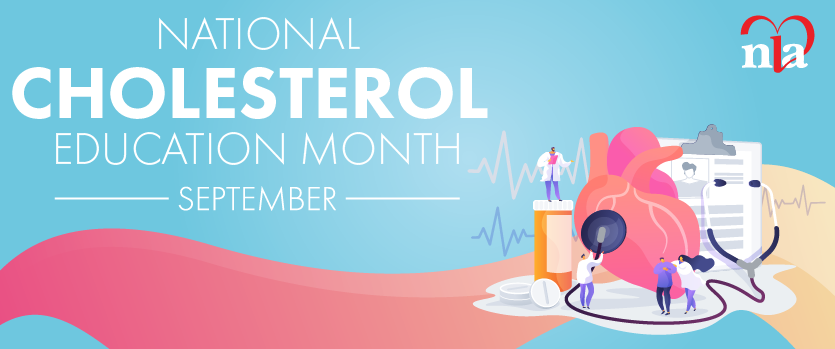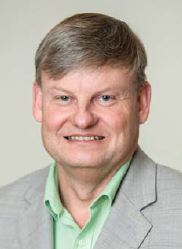In the year 2001, we began a new millennium, but for many of us a more important beginning occurred the next year with the formation of the National Lipid Association. I had the good fortune to be there with my colleagues as we made the decision to convince Christopher Seymour to become our Executive Director. At the time, we were the Southeast Lipid Association (SELA). In the minutes of its first Board meeting, SELA stated that its Mission was “to enhance the practice of lipid management in clinical medicine. It set four objectives: 1) To promote the growth of lipid specialty practice as a defined discipline in clinical medicine; 2) To enhance awareness of emerging knowledge of metabolism, pathogenesis and genetics of lipid disorders; 3) To improve knowledge and professional skills in the diagnosis and the treatment of lipid disorders; and 4) To foster a multidisciplinary team approach to lipid management and prevention of vascular disease. At the time, the need for this to be a national effort was expressed by the organizers. SELA had great dreams and Chris was key to those dreams becoming realities and essential to our rapidly becoming a national and international force for these objectives.
It was the opportune time to form an organization that could address the need for developing the art of clinical lipidology. The power of the new statins and their continual documentation as beneficial in prevention of vascular events caused clinicians in all fields to recognize a gap in knowledge and in the practice of lipidology. Lipidology was not taught in most medical schools, or other professional healthcare programs for Nurse Practitioners, Physician Assistants, Pharmacology, or nutrition programs. It existed primarily as islands of special interest in large medical institutions, often emanating from a research base in a variety of different departments. Recognizing this problem, SELA had been organized as a group of clinical and basic investigators in lipidology who were faculty in Universities throughout the Southeastern USA. Our beginning was possible due to the difficulty in establishing appropriate use of statins in the general population. This had become obvious to the pharmaceutical industry and it was the receipt of a nonrestrictive grant from Parke-Davis and Pfizer that provided the needed financing of the SELA objectives. The first organizational meeting took place in Atlanta on August 16, 1997, and the first “Scientific Forum” was held at Lake Lanier Islands Resort north of Atlanta on August 14, 1998, with a focus totally on lipid metabolism and clinical lipidology. SELA found that a short meeting of one to three days with didactic sessions on lipidology was attractive and these gathered groups of 100 to 200 clinical researchers and healthcare providers. Experts from the northeast and midwest were coming to give talks. They indicated that the need for communication among those in lipidology was felt outside the southeast. Neil Stone, MD, of Northwestern University in Chicago was among the speakers at the Amelia Island meeting. He and Penny Kris-Etherton, PhD, RD, of Pennsylvania State University, Michael Davidson, MD from Chicago and others across the U.S. urged SELA’s founders to consider making our vision one of national scope.
Inspired by input from our colleagues, the SELA Board of Directors adopted much more ambitious objectives to include: 1) Providing a means of certification of expertise in Lipidology as with a Board examination; 2) Developing a scientific Journal of Clinical Lipidology; 3) Adding additional regional associations; and 4) Eventually organizing a National Lipid Association. However, it quickly became clear that to achieve such lofty goals, we would need full-time management with expertise in disparate areas including significant fundraising, staff organization and supervision as well as the planning of larger meetings. With our original sponsors endorsement, we began a search for additional sources of funding and to address the need for a full-time Executive Director. John Guyton learned of Chris Seymour and his work at the American Academy of Clinical Endocrinology and suggested that we should explore his interests. He had a degree in chemistry, an MBA and had served as a Commander in the US Navy as a surface warfare officer. All that sounded like the type of training he would need, but would he be interested in taking on the daunting responsibility of turning a group of enthusiastic clinicians and academicians into a successful professional medical organization? After one conversation with Chris, we decided he was the person to tackle this adventure with us. The decision was made during our second annual Scientific Forum held at the Homestead Hotel near Roanoke, Va., in August 1999 when SELA selected Compass Management & Consulting, led by Chris as our contracted management firm. Our membership began to participate in one amazing development after another after Chris became our Executive Director. We had very little money, but our membership grew rapidly. We seemed to always raise the needed funds and only later did we learn that when necessary, Chris loaned SELA his own personal funds to keep us afloat.
On June 18, 2001, Chris had quietly completed all the legal work to form a National Lipid Association and in November 2002, bylaws were adopted and the NLA was established as a professional association with a Board of Directors. On July 9, 2004, the second regional Chapter was formed in Chicago as the Midwest Lipid Association (MWLA) with Neil Stone as the first President. This was followed by the Northeast Lipid Association in 2005. By 2007, the Southwest Lipid Association (SWLA) and the Pacific Lipid Association (PLA) had been incorporated and the NLA extended from Maine to Hawaii. During 2007, all regional components held their own educational meetings. Over the years, the ability to certify accomplishment in scholarship and knowledge development has been possible through the establishment of the American Board of Clinical Lipidology for physicians and the Accreditation Council for Clinical Lipidology (ACCL) for other health professionals. The regional organizations had their own governing boards but the NLA provided supportive functions with appropriate offerings for continuing education of lipidologists. In the process, the Association became credentialed as an official Continuing Medical Education provider. Throughout the years, the latest in clinical science and practical methods in clinical lipidology have been a part of regional and national meetings. These learning opportunities have been extended by the Lipid Academy and Masters in Lipidology as well as other special courses that create a broad based comprehensive program. This was designed to provide a match to the perceived level of knowledge of the potential participants at any given time. Private learning has also been supported by the NLA Self-Assessment Programs (NLA-SAP) and our regular publications. We now have two publications that are growing in their circulation, reaching national and international audiences with new information about lipidology. These include the popular LipidSpin devoted to clinical issues and published in a rotating manner by the Regional Associations. The Journal of Clinical Lipidology is a scientific journal devoted to clinical research and to new findings in human physiology and genetics. This Journal reaches libraries around the world with annual submissions of approximately 600 unique articles and more than 250,000 manuscripts being downloaded annually. Its Impact Factor ranks with the best journals in atherosclerosis and lipid metabolism.
In recent years, the NLA has developed a Foundation that allows the dispensing of grant funds for special projects that will facilitate the mission of the Association. On the international scene, we have co-sponsored programs with the International Atherosclerosis Society and participated in the triennial International Symposium on Atherosclerosis (ISA). In 2015, the NLA began an annual Research Award for the most outstanding recent development in therapeutics in the name of Akira Endo, the discoverer of statins. The Endo Award will be given at each ISA meeting in perpetuity with the NLA as the sole sponsor.
In 2017, the NLA awarded the first Junior Faculty Research Award in an effort to encourage scholarly advancement of Junior Faculty in the pursuit of a career related to the understanding and treatment of lipid disorders in humans. This provides salary support to help the transition from post-graduate training into the early years of a career in research and teaching. The first awards will begin in July of 2017 with two years of support for one recipient focused on basic science and a second on clinical research. The NLA will provide $70,000 per year in salary support through eligible institutions to these young faculty members. By increasing our training programs, we believe we will provide a continuing growth of lipidology as an academic career. The training of sub-specialists in our field will stimulate growth in the number of those who have the proper basic knowledge and clinical training to continuously improve the ability of our healthcare team to provide excellence in clinical lipidology.
For the past 15 years, we have enjoyed being a part of a most effective national organization that is devoted to our mission of improving the practice of clinical lipidology. We are now seen as the major authority on clinical lipidology in the United States. Our many respected programs have allowed us to achieve this standing and much credit for this success is due to the imagination, dedication and hard work of Chris Seymour. In celebrating our 15th anniversary, we appropriately recognize and celebrate his contributions to the accomplishments of the National Lipid Association. He has now retired as our Executive Director and turned this critical position over to the very capable Brian Hart in whom we feel secure as he demonstrates all the dedication and talent necessary to continue our growth and further our accomplishments.






.jpg)
.png)













